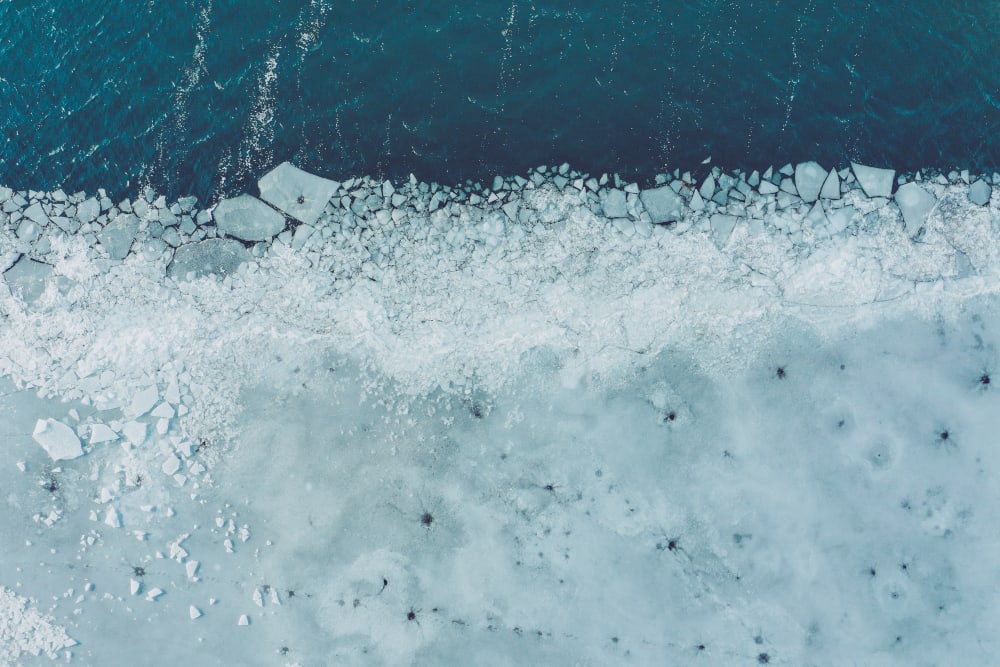Japan PE fundraising: Why everyone wants a piece of the middle market
- Japan is Asia’s PE hotspot, thanks to its robust deal flow and the search for a China alternative
- Concerns about certain fund size increases focus on whether GPs can deploy efficiently
- LPs are willing to halve their normal commitments to a foothold with preferred managers
The Dietrich Foundation has one of the highest allocations to China private equity and venture capital of any US-based LP. It is now looking to expand into Japan – a reflection of how the country has risen in prominence relative to other markets and the fact that many China managers have put their fundraising plans on hold, pinning their hopes on an eventual rebound in investor sentiment.
Edward J. Grefenstette, CEO and CIO of the USD 1.5bn foundation, stresses that he isn’t contemplating Japan on a whim. Having tracked the country for a decade, his team has been won over by investment opportunities around demographics, divestments, and digitalisation. If the market passes closer scrutiny, a debut fund commitment is seen as likely “over the next couple of years.”
“When people say they had an allocation to China but they’re now simply going to shift it to Japan, it’s hard not to smile,” said Grefenstette. “But it is happening. Despite profoundly different opportunity sets, profoundly different stages of economic development, and profoundly different geopolitical risks, some people see all of Asia as ‘the same bucket,’ without nuance. We’re not in that camp.”
This observation adds context to the clamour for Japan exposure that has led to a string of managers – from the moderately established to the well-established – closing oversubscribed mid-market funds in short order. In the past three months, The Carlyle Group, Integral Corporation, Sunrise Capital, and Japan Growth Investments Alliance (JGIA) have closed funds amounting to JPY 824bn (USD 5.2bn).
The capital in those four funds alone exceeds the most raised for Japan buyout mandates in any single calendar year, though it is worth noting that the market is notoriously lumpy. They have propelled overall private equity and venture capital fundraising past the 2023 total of USD 9bn and within reach of the record high of USD 11.4bn set in 2018, according to AVCJ Research.
Most striking is that it’s taking place against a miserable backdrop for Asia fundraising, with last year’s commitments to managers in the region – excluding the renminbi-denominated space – representing an eight-year low. Japan has become the region’s hotspot, which has in turn stoked fears that the flood of capital will push funds beyond the optimal size.
“All the stats, from an increasing number of carve-outs to the backlog of succession deals, indicates that deal flow is healthy and maybe they could build funds that are twice as large in a five-year timeframe,” said Nick Milnes, a director covering Asia and Europe private equity at MetLife Investment Management.
“Then it’s a question of whether they will do more deals or larger deals, whether they are increasing the team size, and whether the current level of deal flow is sustainable. It is concerning when they go from the middle market to the upper middle market, and we’ve been scaling down a bit because of that.”
Pros and cons
Steep increases in fund size are not a market-wide phenomenon. The middle market has essentially divided into three strands, with Carlyle, Japan Industrial Partners (JIP), Integral, and Polaris Capital Group scaling up beyond the rest. In each of the last two vintages, all four have doubled in size.
For JIP and Polaris – currently deploying funds of JPY 314bn and JPY 150bn, respectively, though Polaris is expected to return to market imminently – the stated aim was to participate in the larger corporate carve-outs often pursued by pan-Asian GPs. For Carlyle and Integral, it is about doing more deals as well.
“We have already deployed 80% of Fund IV [which closed on JPY 258bn in 2020] in three years and our standard investment period is five years. With faster deployment, and assuming the current deal flow continues, we can capture more opportunities by increasing the size of the fund,” said Takaomi Tomioka, a managing director and co-head of Japan at Carlyle.
The average cheque size rose from JPY 11bn in Fund III to JPY 20bn in Fund IV. The likely range for Fund V, which closed on JPY 430bn, is JPY 20bn-JPY 40bn, but Tomioka still describes this as middle market.
Integral’s interpretation of the middle market is smaller: its sweet spot is companies with enterprise valuations of JPY 10bn-JPY 50bn, implying equity cheques of half that. However, with JPY 250bn for Fund V, Tsuyoshi Yamazaki, a partner at the firm, expects to complete up to 14 deals – twice as many as Fund IV – and in select instances enter the lower end of the spectrum occupied by global and pan-Asian GPs.
The notion of a broader middle market opportunity set is borne out by the numbers. Between 2015 and 2020, Japan saw an average of 74 buyouts per year, most of them in the sub-USD 200m space. It topped 90 in 2021 and surpassed 120 in each of the next two years. The running total for 2024 is already 80.
Founder succession and corporate carve-outs are still the middle market mainstays, driven by greater familiarity with private equity and increased pressure on Japanese companies to prioritise return on equity over scale. More recently they have been joined by privatisations, following the Tokyo Stock Exchange’s call for companies trading below book value to consider their strategic options.
“Our deal flow is the best we’ve seen in my 20 years of investing in Japan. We thought we could deploy JPY 100bn in three-and-a-half years, but based on our current trajectory, we’ll be done by the end of the year,” Jun Tsusaka, founding managing partner of NSSK, which started deploying its third fund in 2022.
“Next time, it will probably be closer to JPY 200bn. There is an element of tail chasing dog; we will hit that moment when the music stops, and everyone has too much money. Every movie has that episode. But will it happen in the next 3-5 years? A lot of investors are saying probably not.”
Others are more conservative in their outlook. The Longreach Group, which focuses on Japan and Japan nexus opportunities elsewhere in Asia, plans to maintain a steady pace of deployment over three years. One consideration is vintage year risk, said Mark Chiba, the firm’s chairman. The other is wanting to remain in relatively underpopulated territory between the small-cap and large-cap GPs.
Bandwidth is an additional constraint. The Longreach team has grown gradually to around 26, including 16 investment professionals; doubling headcount to accommodate a larger fund is seen as unfeasible. The manager is currently seeking USD 800m for Fund IV, up from USD 650m in the last vintage.
Integral claims 50-60 investment professionals out of a total headcount of 85, having grown from about 60 on closing Fund IV. The firm is still hiring, with Yamazaki making the case that a larger team could take on even more deals, but other industry participants point to challenges in recruitment even as the quality and quantity of candidates deepens. Moreover, retention is increasingly a challenge.
“It used to be that large-cap players offered attractive compensation packages, but you might not get staffed on a deal for a couple of years. Investment professionals wanting deal experience often preferred to join mid-cap GPs,” said Shota Kuwaki, an executive director at Sunrise. “Now, the large-cap players are doing 2-3 deals a year, so it is possible to build a career.”
LPs are mindful of this as well. AVCJ spoke to two investors that had declined to re-up with Japanese middle-market managers based in part on fund size concerns. The opportunity set was not disputed. Rather, due diligence efforts threw up unanswered questions as to whether GPs had the experience and resources to underwrite, execute, and manage larger deals or a larger number of deals.
“With more pan-regional funds focusing on Japan, the logical place for them to hire is from groups in the middle market. Our partners have recognised this and made appropriate adjustments to compensation and economics,” said Liam Coppinger, head of Asia private equity at Manulife Investment Management.
Supply-demand imbalance
The pension plan, which believes Japan could overtake China as its largest Asian market by net asset value, has counselled portfolio managers to be cautious about fund size. At the same time, however, other LPs are pushing local private equity firms to increase targets as they build out exposure to the market.
Investor relations professionals, placement agents, and fund-of-funds all highlight a surge of interest in Japan from LPs that previously gave the market little thought. A refocusing of Asian allocations that were once China-centric is a prominent theme, with Japan’s strong track record of distributions from the middle market cited as the clinching factor over other geographies.
The nature of that interest varies by fund size. Carlyle flagged an uptick in participation from sovereign capital in the Middle East and Asia; Integral received backing from US pension plans previously unable to commit due to minimum cheque size constraints; Sunrise and JGIA, with their more modest fund sizes, were pursued by endowments, foundations, and family offices from North America and Europe.
“Some of these investors had good experiences in Japan’s public markets with activist funds and now they’re thinking about private markets. It is creating excess demand from LPs we haven’t traditionally seen in Japan private equity,” said Niklas Amundsson, a partner at placement agent Monument Group.
These international LPs are not only competing with each other for allocations, but also with Japanese investors that have become more active in alternatives in recent years. The offshore-onshore split in LP bases is driven by historical precedent – some managers have only been formally marketing overseas for two or three vintages – but expectations of a fundamental swing towards foreign capital are misplaced.
“We expected the international share to be larger, maybe 60%-65%, but more Japanese LPs are starting to make commitments to alternatives, or they are committing larger sums,” said Yamazaki of Integral, which saw the onshore share of Fund V hold steady at 50% despite the corpus doubling in size.
Sunrise increased the offshore portion of its USD 500m fifth fund to 75%, up from two-thirds in Fund IV, but the re-up rate was around 95%, which left little scope for additions. JGIA, meanwhile, grew global representation in its LP base from negligible in Fund II to one-third of Fund III. Although the corpus increased by 41% to JPY 65bn, there was only space for seven or eight overseas investors.
One fund-of-funds LP noted that he had clients try and fail to get allocations to Sunrise and JGIA. Now attention has switched to Aspirant Group, which is preparing to launch its fourth fund. The firm’s previous vintage was much like JGIA: a near 50% increase in the corpus to JPY 50bn, an international share that went from zero to 40%. The question is how big the manager will look to go.
“The hard cap has yet to be decided, that’s the problem with allocations to Japan right now,” said a second fund-of-funds LP. “It will probably be JPY 75bn-JPY 85bn, which is reasonable. It helps there are a lot of domestic LPs because they pay a lot of attention to fund size discipline.”
Indeed, the onshore-offshore dynamic has assumed greater significance following an approximately 50% depreciation in the yen since the start of 2021. A USD 20m commitment to Aspirant’s third fund in 2019 converted into JPY 2.1bn. The same investor seeking an identical re-up for Fund IV will effectively ask for JPY 3.2bn – an increase that outpaces the one expected for the overall fund.
This has led to an incredible willingness to compromise from LPs wanting access to certain managers. “Some investors from North America and Europe would normally write cheques of USD 200m, but they are happy to scale down to USD 30m-USD 50m to get a foot in the door,” said Kuwaki of Sunrise.
Learning curve
Another option is to push into the ranks of Japan’s nascent GPs, which have been augmented by spinouts from global and local managers in recent years. While Nippon Investment Corporation (NIC) raised global capital from the outset, D Capital and RBG Partners relied on domestic LPs. Two more, Corporate Support Research Institute (CSRI) and REVA Corporation, are in the market with their debut funds.
REVA, a Sumitomo Corporation-sponsored yet independently run manager that takes an operations-heavy approach to investment, reached a third close of JPY 14.3bn in April against an overall target of JPY 30bn. The 20-plus LPs include a couple of foreign names. International investors are also running the rule over CSRI, which is targeting USD 300m for its fund, according to two sources close to the situation.
“International investors tend to avoid first-time funds, but we are getting interest from overseas,” said Kengo Nishinaka, a former Sumitomo executive who founded REVA with two ex-JIP investment professionals and now serves as CEO. “There is a lot of appetite for Japan and then some LPs cannot get into middle-market funds because every manager is oversubscribed and allocations are limited.”
The first fund-of-funds LP, who has tracked CSRI, REVA, and others, does not expect significant client uptake. The sticking point is that, in the absence of a track record to offer comfort, every other aspect of the pitch – from availability of information to clear communication to reporting infrastructure – must be convincing. Japanese GPs unfamiliar with international processes often come up short.
This view is echoed by Brian Lim, a partner and head of Asia and emerging markets at Pantheon, who emphasized the difficulties of working with limited data. “If you can’t deliver the basics of what an institutional investor needs to see to assess you and get comfortable that you have a fiduciary mindset for the next 10-15 years, you aren’t going to raise any money internationally,” he said.
Language is a commonly cited barrier – IR staff or investment professionals struggle to sell the story to an English-speaking audience – but Grefenstette of The Dietrich Foundation believes cultural nuance plays a role too. During exploratory trips to China in the mid-2000s, he would ask GPs what they had learned from past mistakes only to be told that revisiting bad deals wasn’t part of the mindset.
“They are now more acclimated to Western-style due diligence. They are comfortable talking about failure; they recognise it can be a source of learning and improvement,” he said. “But today, when I present those types of questions in Japan, heads usually go down. It can be rather uncomfortable.”
This should resonate in Japan because mistakes have been made. Advantage Partners certainly learned from them, rebuilding its franchise after the 2008 write-off of Tokyo Star Bank threatened to wipe out a JPY 214bn fund. It took 10 years before another country-focused fund crossed the psychologically significant USD 1bn threshold. Advantage stayed below this mark when closing Fund VII on JPY 130bn last year.
Those events remain a reference point when LPs consider the implications of escalating fund sizes, worrying that history will repeat itself. Others point to the differences between then and now. Sunrise’s Kuwaki, for example, contrasts the “overoptimistic and rash” behaviour of 2007-2008 with what – for the most part – he sees as greater discipline around strategy.
“While the market dynamics have changed – we used to have to explain what private equity is; now, founder-owners not only understand it, some only invite private equity players into deals – most investments remain in the small to mid-cap space,” Kuwaki said.














